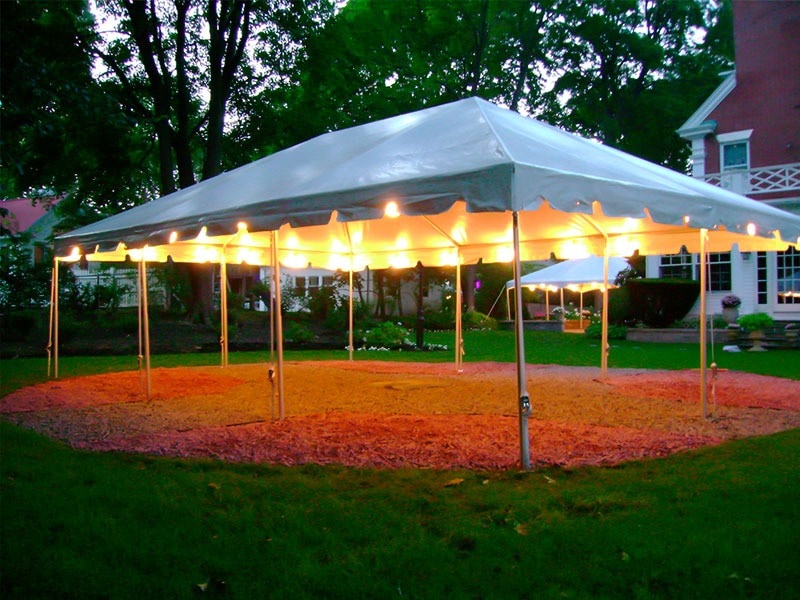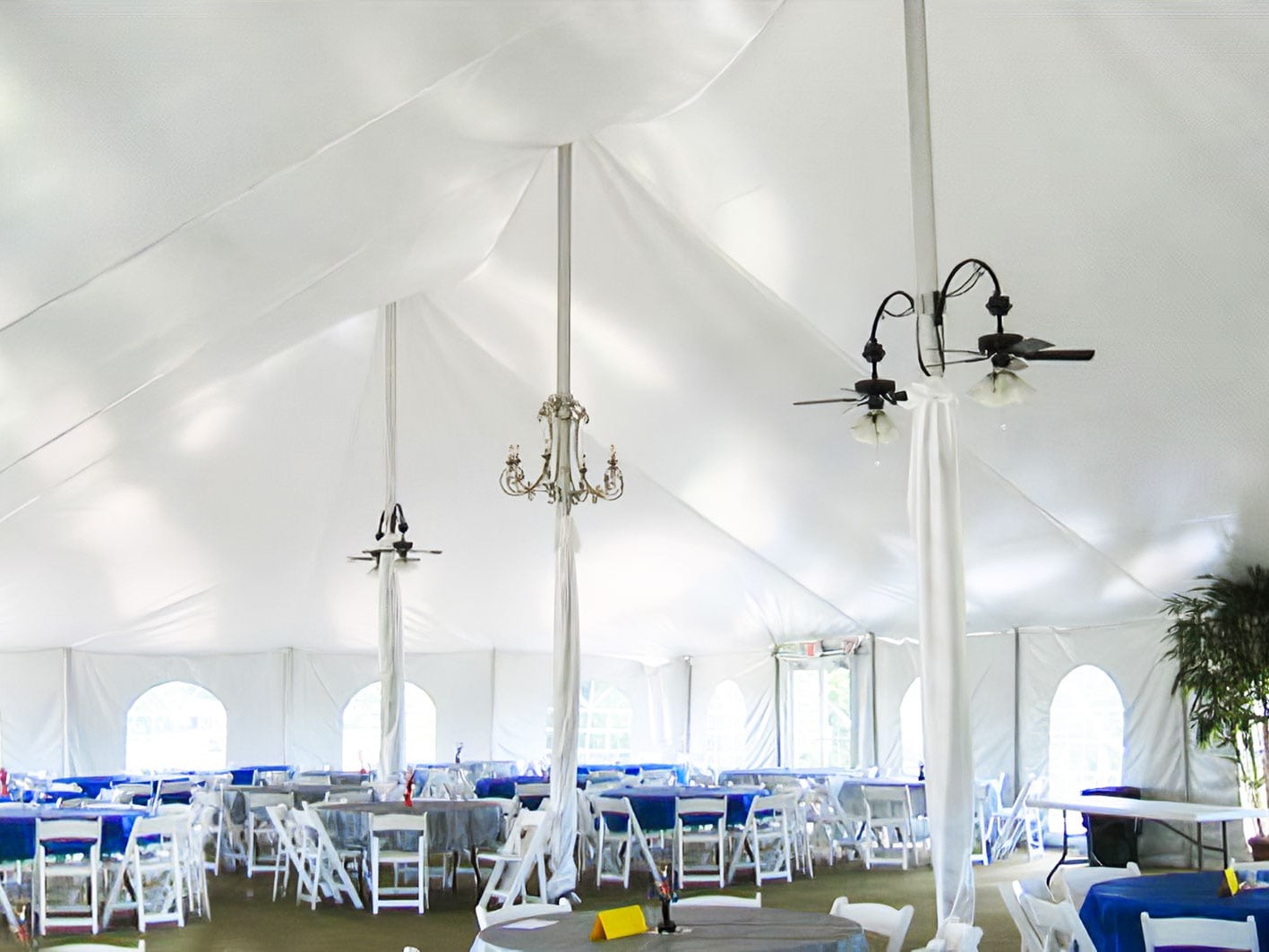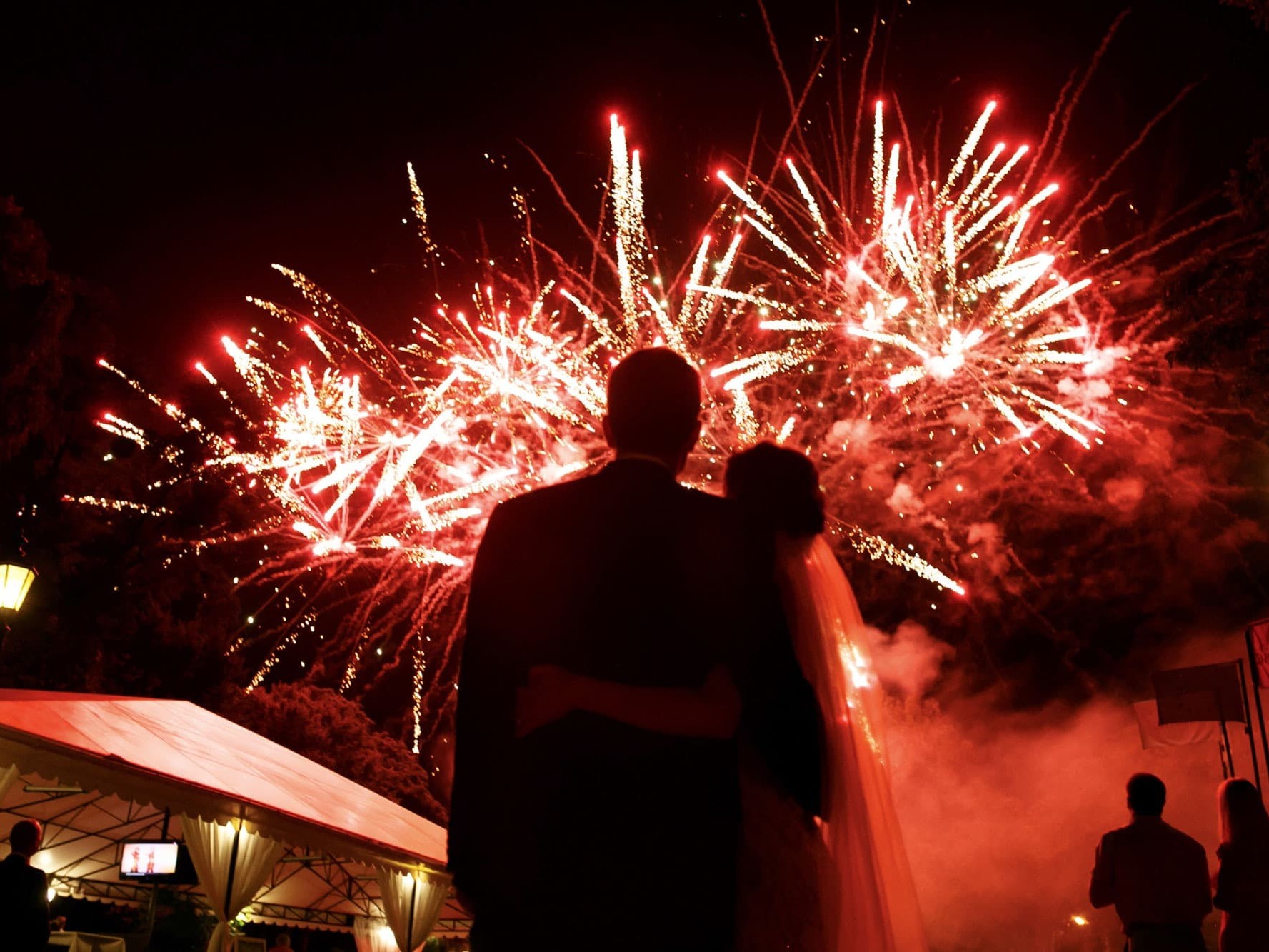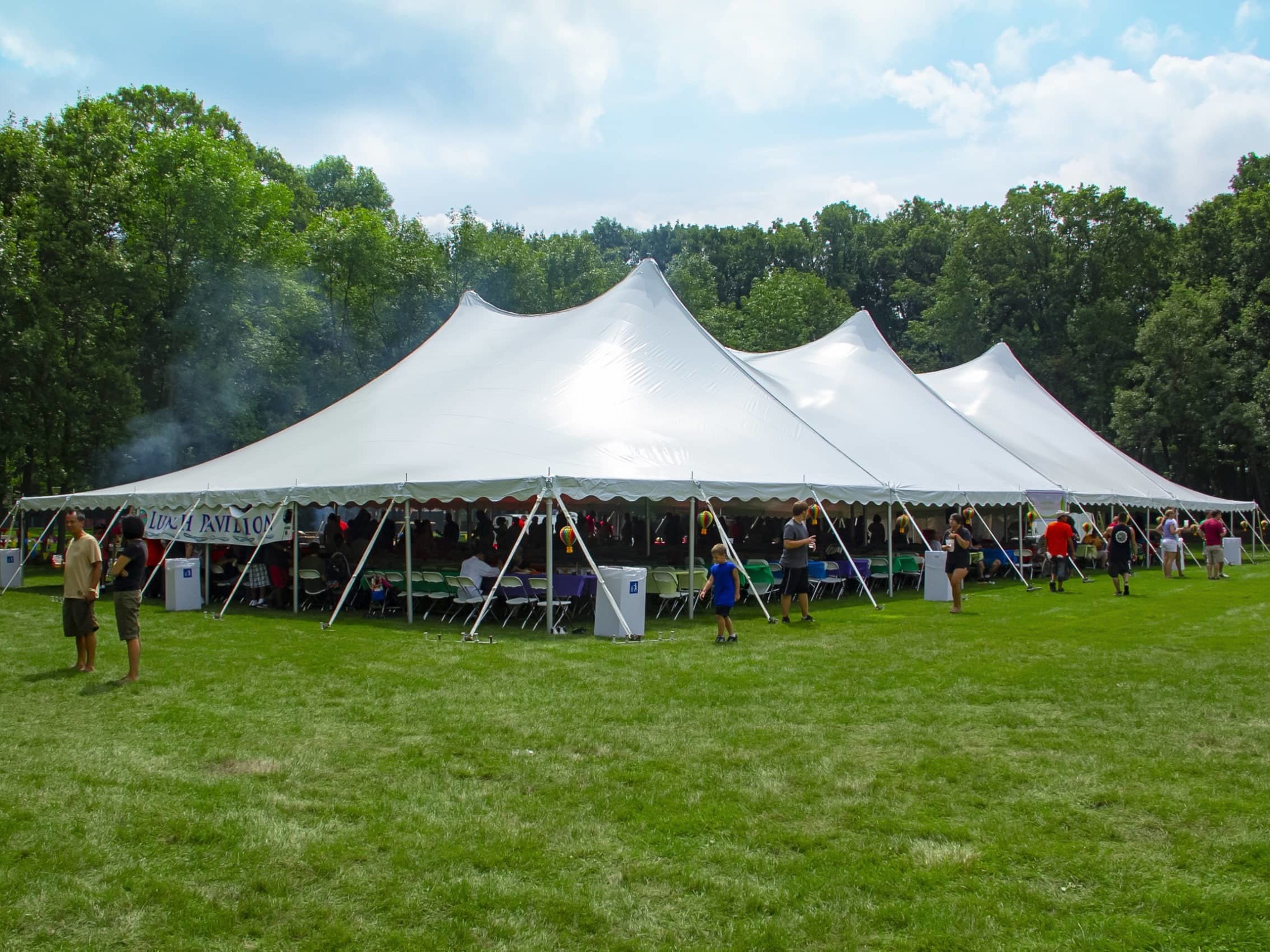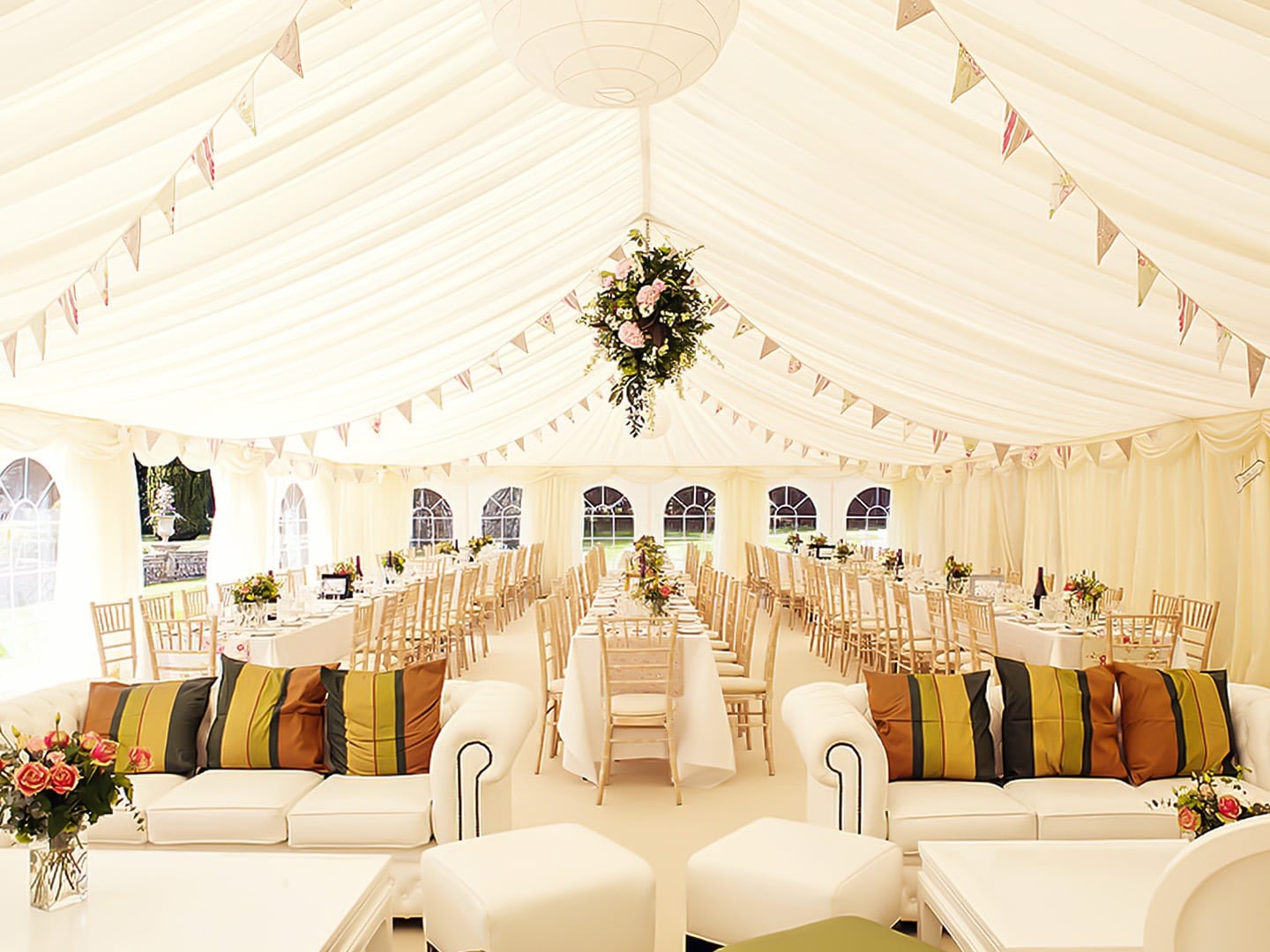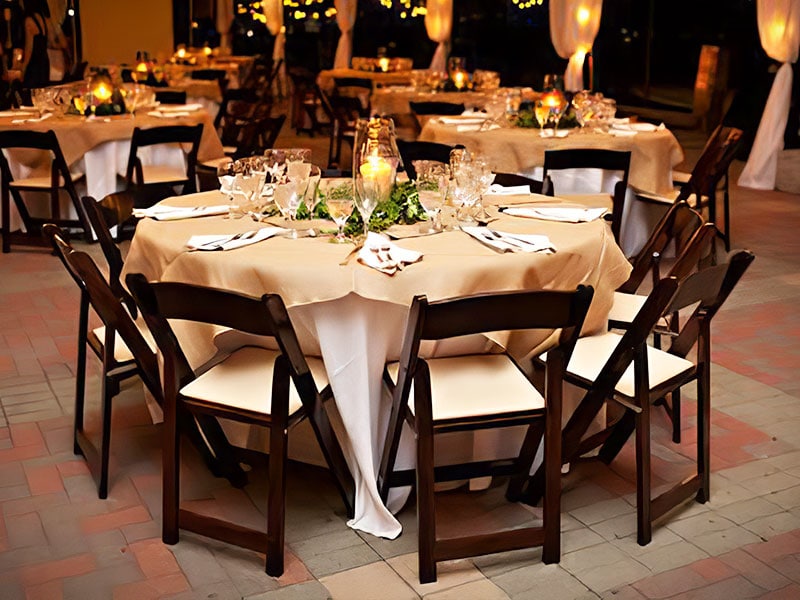Tent Rentals
Renting a tent can be a stressful experience, and there are a lot of companies out there to choose from. We’re here to help guide you through some of the most common pitfalls. To start with, there are two main types of tents that you can rent.
The two basic types of party tent rentals:
Frame Tents
Frame tents are strong, durable tents that are held up using a system of aluminum poles, like a truss system in a house. The aluminum frame forms a free-standing structure that the tent fabric is secured to. This structure makes it so there is no need for any poles propping up the inside of the tent. As a result, there is more uninterrupted space under the tent itself. These tents can be set up on a wide variety of surfaces, including grass, concrete, asphalt, decks, etc.
Frame tents do have to be secured, but not necessarily by stakes. They can be secured by sandbags, water barrels, or other forms of weight. Because of their sturdiness, frame tents can also have sidewalls installed on them, so if you’re hosting an event in weather where you need heating or cooling, frame tents are probably your best bet. Because of the way frame tents can be secured, they’re also the way to go if you’re setting them up on a hard surface.
Pros:
- Extremely durable.
- You can set frame tents up on multiple surfaces.
- Can be secured via staking or weights.
- You can have sidewalls attached, which helps with insulation.
- Space underneath the tent is uninterrupted by poles.
Cons:
- More expensive than canopy tents.
- Require specialized installation by tent rental company.
Canopy Tents / Pole Tents
Canopy tents are usually smaller, lighter weight, and more portable than frame tents. Also known as pole tents, these types of tents require one or more central poles under the tent to support the canopy. Because of this support structure, canopy tents are typically not as sturdy or durable as a frame tent, but have the advantage of being relatively inexpensive, and can usually be installed by the customer if they like. The canopy is made of a lightweight vinyl material. Canopy tents require a lot of staking, and cannot be secured with weights. The stakes provide the tension that holds the fabric tight, and the poles keep the canopy supported vertically. Since canopy tents are staked, they must be installed on a soft surface such as dirt or grass.
Pros:
- Canopy tents are cheaper than frame tents.
- Can be set up by customers without specialized installation.
- Elegant swoops from the pole supports give the tent a beautiful shape.
Cons:
- Can only be secured by staking.
- You can set them up on dirt or grass.
- Not as durable as frame tents.
- Poles supporting tent interrupt space underneath tent.
Both canopy tents and frame tents come in a wide variety of sizes, so they can suit whatever spacing requirements you may have. Anything from 10’w x 10’l (good for residential events or small corporate booths) to 40’w x 100’l (works for 200-seat wedding receptions).
Related Pages
Site Launch
Welcome to TentAndPartyRental.com! Your party rental directory and info center for all things tent…
Renting a Festival Tent in Springfield, Illinois
Tent Rental,Party Rental,Festivals
Springfield gets a lot of sun, so tents are in high demand and there are plenty of options to…
Tent Rental for Weddings in Chicago
Tent Rental,Wedding Tents,Chicago
Find the perfect tent rental for your Chicago wedding can be quite a challenge! Here are some tips…
What To Look For When Renting Tables and Chairs
Party Rental,Table Rental,Chair Rental
Planning the seating for your guests can be a huge hassle. You have to plan out spacing, see how…
